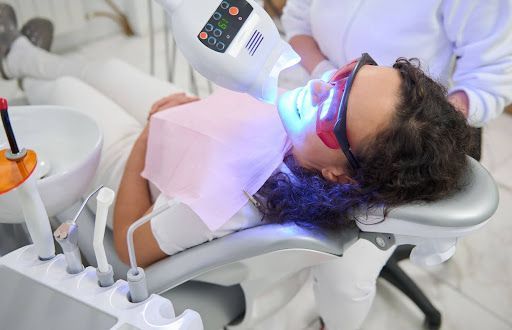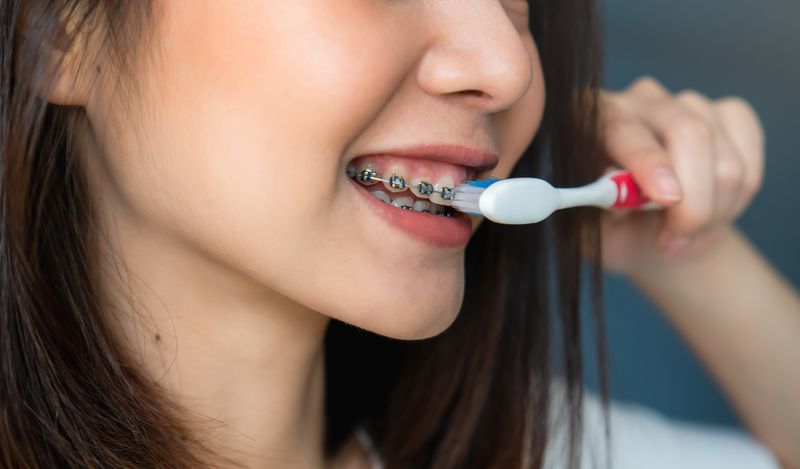A Complete Guide to Dental Check-Ups with Braces
When it comes to maintaining oral health, regular dental check-ups are essential, especially for individuals wearing braces. These check-ups play a crucial role in ensuring that braces are properly adjusted and teeth are healthy throughout the treatment process. Understanding what to expect during these appointments can alleviate any concerns and help individuals make the most out of their orthodontic journey. This provides a comprehensive overview of dental check-ups with braces, covering everything from preparation to post-appointment care, to help individuals navigate this aspect of their orthodontic treatment with confidence.
Understanding the Importance of Regular Dental Exams During Orthodontic Treatment
Maintaining diligent dental health is crucial, especially for those undergoing orthodontic treatment with braces or other devices. Regular dental exams play a pivotal role in preventing dental diseases, such as cavities and gum disease, and in promoting overall oral health. Braces, while effective in aligning teeth, can create nooks and crannies that are challenging to clean, increasing the risk of plaque buildup and dental issues. Consequently, patients with orthodontic devices require more frequent monitoring to ensure their oral health remains optimal throughout their treatment journey.
Orthodontic devices do not just complicate oral hygiene routines; they also necessitate a specialized approach during dental exams. Dentists and hygienists utilize specific tools and techniques to clean around brackets and wires effectively. This makes the role of these routine check-ups even more critical, as they assist in maintaining the health of the teeth and gums, ensuring the orthodontic treatment can continue without any complications or delays.
The Coordination Between Your Orthodontist and Dentist
The collaboration between your orthodontist and dentist is key to a successful orthodontic journey. These professionals work together, sharing insights and updates about your oral health and orthodontic progress. This coordinated care approach results in a personalized treatment plan that addresses both your orthodontic needs and overall dental health. Such collaboration is particularly important for patients undergoing treatment in areas like Omaha, Fremont, and Elkhorn, NE, where McAllister Orthodontics and local dental clinics often work in tandem for the benefit of patients.
When your orthodontist and dentist communicate effectively, any potential issues can be promptly identified and addressed, preventing minor problems from becoming major ones. Information sharing about the progress of your orthodontic treatment, changes in your oral health, and any adjustments to your treatment plan ensure that both your orthodontist and dentist are on the same page. This seamless coordination not only enhances the effectiveness of your treatment but also contributes to a more comfortable and efficient orthodontic experience.
Regular dental check-ups during orthodontic treatment are essential for maintaining oral health and ensuring the success of your treatment. The coordinated care provided by your orthodontist and dentist in locations like Omaha, Fremont, and Elkhorn, NE, exemplifies the comprehensive approach necessary for optimal oral health maintenance. Ensuring that these visits are prioritized will ultimately contribute to a healthier smile and a successful orthodontic outcome.
What to Expect During a Dental Check-Up with Braces
Visiting the dentist while wearing braces might seem daunting, but understanding what to expect can alleviate any apprehensions. Your visit usually begins with a routine examination, where the dentist assesses the health of your teeth and gums. For patients with braces, this includes checking not just for cavities and gum disease, but also for any areas around the brackets where plaque may have accumulated.
Special considerations are taken during the cleaning process. Dentists and hygienists use tools designed to navigate around orthodontic appliances safely. Tools like water picks or air-driven devices may be employed to remove plaque and tartar without damaging the braces. Despite the thoroughness, some patients might experience discomfort or sensitivity, a common concern. Communicating any discomfort to your dentist can help in adjusting the techniques used to ensure a more comfortable experience.
Another common worry is the fear of damaging the braces during the exam or cleaning. Dentists are skilled in taking care not to apply unnecessary pressure on the brackets and wires, ensuring that your orthodontic devices remain intact throughout the process. They’ll also provide tips on maintaining your oral hygiene at home, which is crucial for minimizing issues between visits.
How Often Should You Visit the Dentist During Orthodontic Treatment?
The American Dental Association (ADA) emphasizes the importance of maintaining regular dental visits for everyone, including patients undergoing orthodontic treatment. While the general recommendation is a visit every six months, those with braces might need to see their dentist more frequently. This frequency can vary based on the type of braces, the complexity of the orthodontic treatment, and individual oral hygiene and health needs.
For instance, patients with traditional metal braces may require more frequent visits compared to those with removable devices like Invisalign due to the challenges in cleaning around fixed brackets and wires. Your dentist, in consultation with your orthodontist, can recommend a visitation schedule tailored to your specific needs. By adhering to this schedule, you can ensure optimal oral health, making your orthodontic journey smoother and more effective.
For further guidance on the recommended frequency of dental visits during orthodontic treatment, consider referencing reputable sources such as the ADA's official website.
Understanding what to expect during dental check-ups with braces and following a tailored schedule for visits are key components in achieving and maintaining oral health throughout your orthodontic treatment. By catering to the unique needs that braces present, you can work towards ensuring a successful outcome with a healthy, beautiful smile.
Preparing for Your Dental Check-Up: Tips and Tricks
Approaching a dental check-up with braces requires a bit more preparation than a standard visit. Before your appointment, practicing thorough oral hygiene at home is crucial. Brushing around the brackets and wires meticulously and using floss threaders can help remove lingering food particles and plaque, making the dentist's job easier and your visit smoother. If you're experiencing any discomfort or have noticed any issues, jot them down so you can discuss them with your dentist during your appointment.
Remember, communication is key. Being open and honest about your oral hygiene habits, including any challenges you might be facing with your braces, can aid your dentist in providing personalized advice and solutions. This candid dialogue ensures your dental care is tailored to your specific needs.
Understanding Potential Oral Health Issues with Braces and How to Prevent Them
Orthodontic treatment, albeit beneficial, can come with its set of challenges. Common issues include gum diseases, cavities, and demineralization around the brackets, which can lead to white spot lesions. Regular dental visits are imperative in catching these issues early. Prevention is just as crucial. Ensuring you're brushing after every meal, using fluoride mouthwash, and avoiding sugary foods and drinks can significantly mitigate these risks.
Another vital component of preventive care is adhering to your orthodontists and dentist's recommendations regarding oral hygiene tools and techniques. For example, interdental brushes and water flossers can be incredibly effective in maintaining cleanliness around orthodontic devices.
Emphasizing the Long-Term Benefits of Coordinated Dental and Orthodontic Care
The synergy between your dentist and orthodontist doesn't just facilitate a smoother treatment process; it lays the foundation for lasting oral health. This collaborative approach means any potential problems can be promptly addressed, reducing the risk of complications that could extend the duration of your orthodontic treatment or affect its success.
Coordinated care contributes to a holistic understanding of your oral health, enabling both professionals to make informed decisions tailored to your specific situation. This comprehensive care strategy not only
ensures the efficacy of your treatment but also promotes sustained oral health and aesthetics—benefits that will last well beyond the removal of your braces.
The journey through orthodontic treatment is a comprehensive process that extends beyond the orthodontist's office. It incorporates regular dental check-ups, preventive care, and a collaborative approach between your dental care providers. By adhering to the outlined recommendations and maintaining open communication with your dentist and orthodontist, you can navigate this journey smoothly, ensuring a healthy, beautiful smile that lasts a lifetime.
Embarking on your orthodontic journey with braces requires a team of skilled professionals dedicated to ensuring your smile is both healthy and beautiful. At McAllister Orthodontics, we're committed to providing comprehensive care that integrates seamlessly with your dental health regimen.












